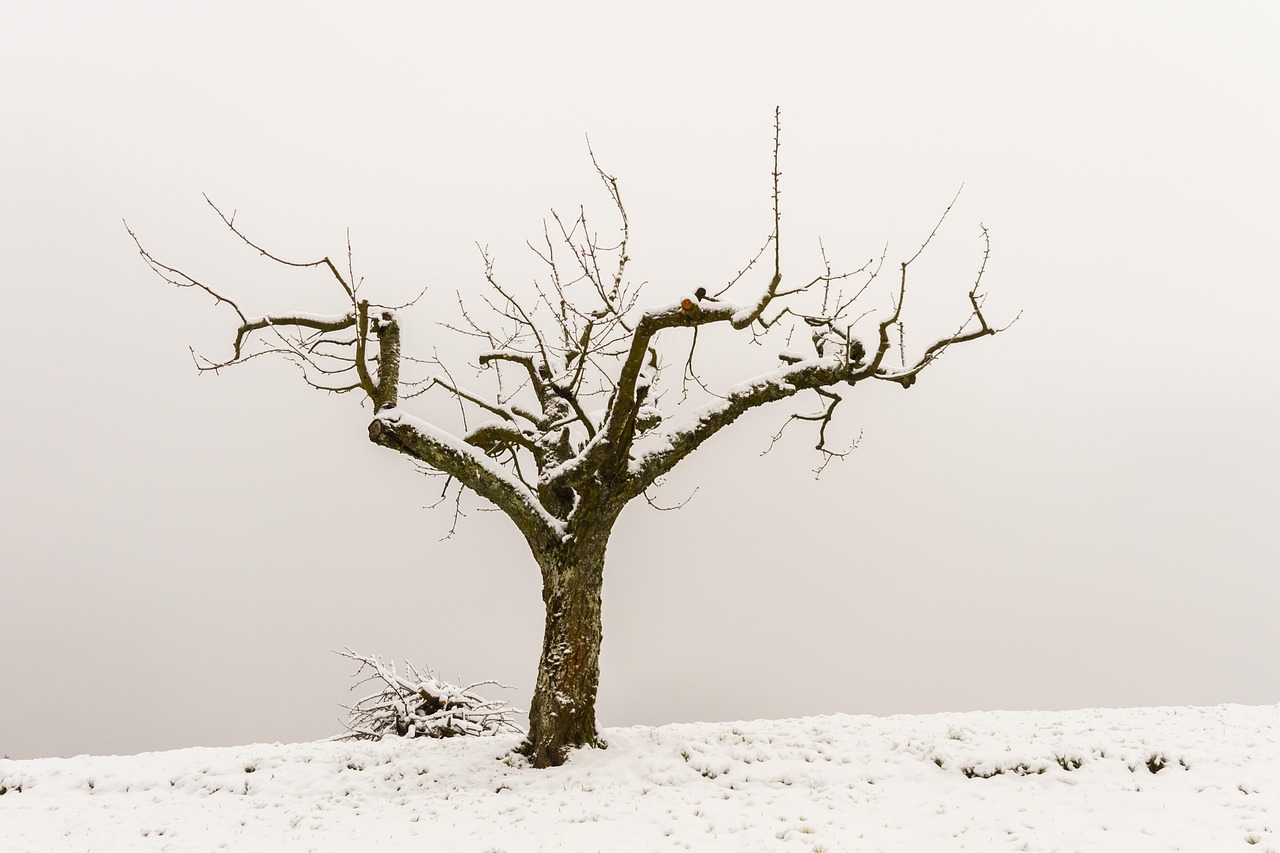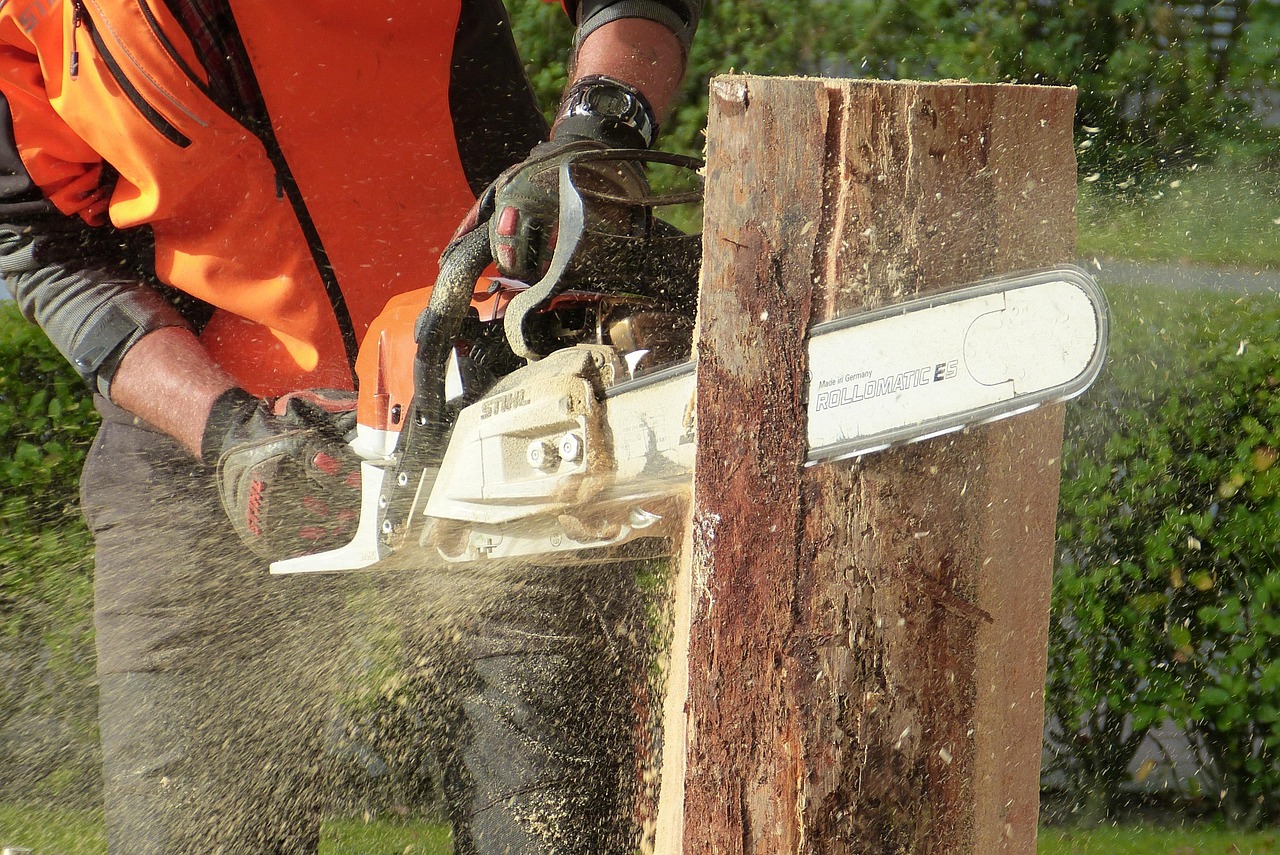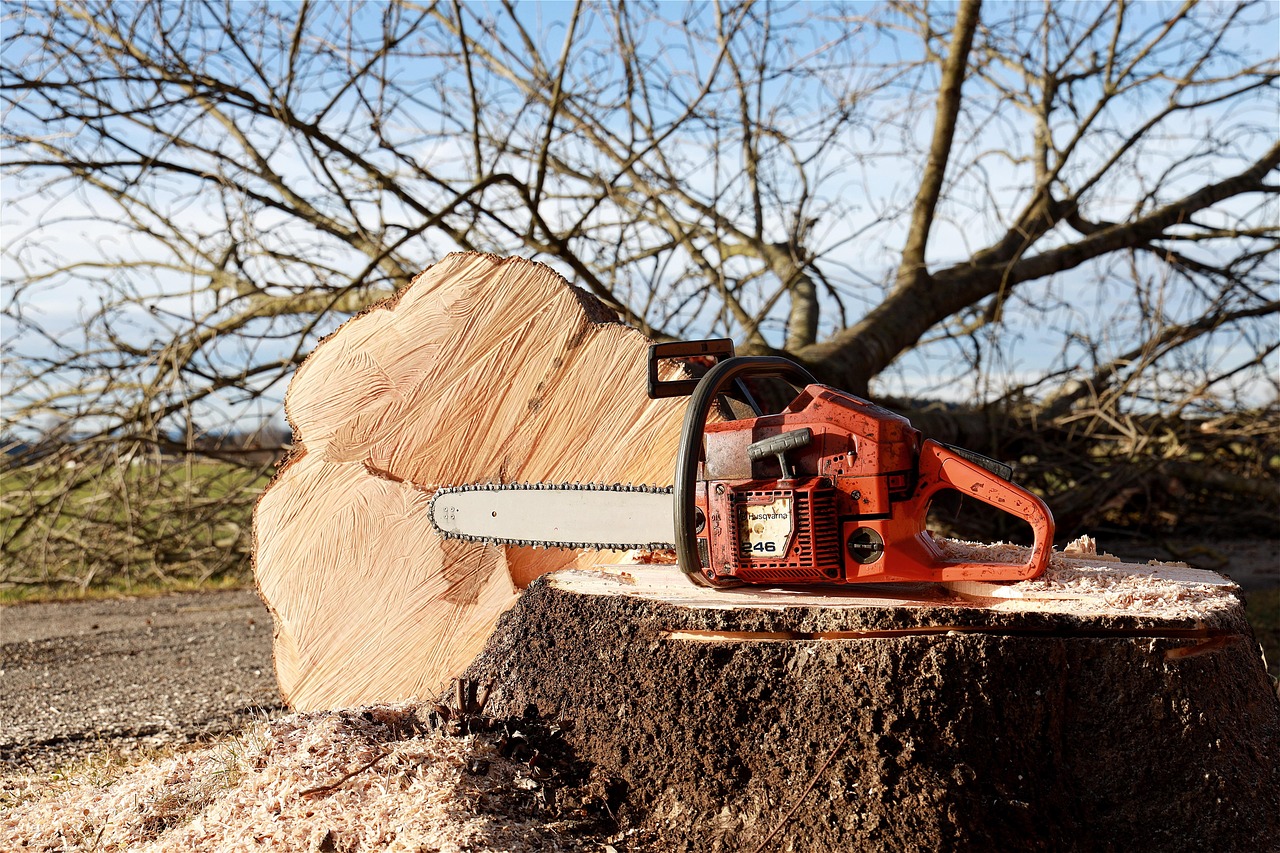Tree pruning around fences and boundaries is essential for maintaining healthy trees and preserving the integrity of property lines. Proper pruning ensures that trees do not encroach on fences, which can lead to damage and disputes with neighbors.
When planning tree pruning near fences, it is important to consider the types of trees, their growth patterns, and the specific boundaries they may affect. Trees can grow quite large and spread out, potentially causing problems if they are not managed properly. Pruning not only helps maintain a neat appearance but also promotes better health and growth in trees.

Understanding the basic principles of tree pruning is vital. This includes knowing when to prune, how much to cut, and what tools to use. It is also crucial to be aware of any local regulations regarding tree maintenance, especially when it comes to property boundaries. Property owners may face legal issues if they trim trees that belong to a neighbor or violate local ordinances.
Key Considerations for Tree Pruning
Before proceeding with tree pruning, there are several factors to take into account. These considerations will help in making informed decisions that benefit both the trees and the surrounding environment:
- Tree Species: Different species have unique growth habits, which influence how and when they should be pruned.
- Growth Patterns: Understanding how a tree grows can help determine the best approach to pruning.
- Timing: Pruning at the right time of year is crucial for optimal tree health.
- Tools: Using the appropriate tools for pruning can make the task easier and more effective.
- Local Regulations: Be aware of any laws regarding tree maintenance in your area.
Moreover, when pruning near fences, it is essential to maintain a safe distance from the fence line. This prevents damage to both the tree and the fence. The goal is to shape the tree in a way that allows it to thrive while respecting property boundaries.

Types of Pruning Techniques
There are several techniques used in tree pruning, each serving a specific purpose. Understanding these techniques can help determine the best method for your trees near fences:
- Crown Thinning: This technique involves selectively removing branches to increase light penetration and air circulation within the tree.
- Crown Raising: This involves removing lower branches to raise the canopy of the tree. It is particularly useful near fences where clearance is necessary.
- Crown Reduction: This technique reduces the size of the tree’s canopy while maintaining its natural shape.
- Deadwood Removal: Removing dead or diseased branches helps improve overall tree health and appearance.
Tools Needed for Pruning
Using the right tools is essential for effective tree pruning. Here is a list of common tools needed for pruning tasks:
| Tool | Description |
|---|---|
| Pruning Shears | Ideal for cutting small branches and stems. |
| Loppers | Used for cutting larger branches that are too thick for pruning shears. |
| Saw | A handsaw or chainsaw may be necessary for larger limbs. |
| Pole Pruner | A tool designed to reach high branches without needing a ladder. |
| Gloves | Protects hands while handling tools and branches. |
The right tools ensure that you can prune effectively without injuring yourself or damaging your trees. It is also important to keep tools sharp and well-maintained to facilitate clean cuts. Clean cuts help reduce the risk of disease in trees.

In addition to choosing the right tools, it’s advisable to follow safety precautions while pruning. Wear protective eyewear, gloves, and long sleeves to prevent injuries from falling branches or sharp tools. If working near electrical lines or high branches, consider hiring a professional arborist for safety reasons.
Seasonal Considerations for Pruning
The timing of tree pruning plays a significant role in its effectiveness. Different seasons offer various advantages:
- Winter: Ideal for many species as trees are dormant, reducing stress on them and minimizing sap loss.
- Spring: Best for flowering trees, as you can see their structure before blooms appear.
- Summer: Suitable for correcting growth issues or removing unwanted branches after leaves have fully expanded.
- Fall: Generally not recommended due to increased susceptibility to disease; however, some minor maintenance can be done.
Selecting the right season for pruning can lead to healthier trees and minimize any potential damage. Always assess the specific needs of your trees while considering seasonal factors.

Understanding Property Lines and Tree Ownership
When pruning trees around fences and boundaries, understanding property lines is vital. Property lines define ownership and help prevent disputes with neighbors. Knowing where your property ends can guide you in pruning decisions and help maintain good relationships with those living nearby.
Many homeowners are unaware of the exact location of their property lines. This can lead to unintentional encroachments when pruning trees. It is advisable to check property records, survey maps, or consult a professional surveyor to determine accurate boundaries.
Local Regulations and Tree Pruning
Before starting any tree pruning project, familiarize yourself with local regulations regarding tree maintenance. Many municipalities have specific rules about tree trimming, especially when it comes to trees that may encroach on public property or neighbor’s land. Ignoring these regulations can lead to fines or legal disputes.
- Permits: Some areas require permits for significant tree pruning or removal, particularly for mature trees.
- Protected Trees: Certain species may be protected by law, making it illegal to prune or remove them without permission.
- Neighbor Notification: It may be courteous or legally required to inform neighbors about planned tree work that could impact their property.
Potential Challenges When Pruning Near Fences
Pruning trees near fences can present various challenges. Understanding these challenges helps you prepare and choose the right approach for effective tree maintenance.
Encroachment Issues
Trees that grow too close to fences may encroach on neighboring properties. This can lead to disputes if branches overhang into another person’s yard or if roots damage a fence structure. Regular pruning helps mitigate these issues by keeping trees within their designated area.
Damage to Fences
Improper pruning can lead to damage not only to the trees but also to the fences themselves. For instance, heavy branches may fall during pruning, potentially damaging wooden or vinyl fences. To avoid such damage, consider the following:
- Assess Branch Stability: Before cutting, check for weak or unstable branches that may fall unexpectedly.
- Use Proper Techniques: Employ techniques that minimize the risk of falling branches.
- Work Methodically: Prune systematically to control the direction of cut branches.
Best Practices for Tree Pruning Near Fences
Implementing best practices during tree pruning ensures both the health of the tree and the integrity of surrounding structures. Below are effective strategies for successful pruning around fences:
Plan Your Pruning Strategy
A well-thought-out pruning plan is essential. Identify which branches need to be pruned and establish a timeline based on seasonal considerations. Create a checklist of tasks to keep your pruning efforts organized.
Maintain Distance from Fences
When pruning, aim to maintain a safe distance from the fence line. This prevents damage to the fence and allows the tree to grow freely without interference. A general rule of thumb is to keep at least three feet between the fence and any major cuts made on a tree.
Regular Maintenance and Monitoring
Regular maintenance is key to preventing overgrowth and ensuring trees remain healthy. Schedule periodic inspections of your trees and fences to identify any potential issues early on. Consistent monitoring can help address problems before they escalate.
The Role of Professional Arborists
While many homeowners can manage basic pruning tasks, hiring a professional arborist is often beneficial for larger trees or complex situations. Arborists are trained in tree care and can ensure that pruning is done safely and effectively.
- Expertise: Arborists possess knowledge about tree species, growth patterns, and proper techniques for pruning.
- Safety: Professionals are equipped with safety gear and tools to handle difficult branches and heights.
- Health Assessment: Arborists can assess the overall health of trees and recommend treatments for diseases or pests.
Choosing an Arborist
If you decide to hire an arborist, ensure you select a certified professional. Look for credentials such as certification from the International Society of Arboriculture (ISA) or similar organizations. Ask for references and reviews from previous clients to gauge their reliability and quality of work.
Tools and Techniques for Safe Pruning
The appropriate tools can make a significant difference in your pruning experience. High-quality tools not only make the job easier but also help prevent injury and damage to the tree.
- Bypass Pruners: Ideal for making clean cuts on small branches.
- Anvil Pruners: Best for tougher branches; however, they can crush stems if not used carefully.
- Pole Saws: Useful for reaching higher branches safely from the ground.
- Protective Gear: Always wear gloves, goggles, and hard hats when necessary.
Selecting the right tools and employing safe techniques will enhance your tree pruning efforts while minimizing risks associated with working near fences and boundaries.
Common Tree Species and Their Pruning Needs
Understanding the specific pruning needs of different tree species is crucial for effective maintenance. Each type of tree has its own growth patterns, which influence how and when it should be pruned. Below are several common tree species and their respective pruning requirements.
Deciduous Trees
Deciduous trees lose their leaves in the fall and require specific care during their dormant season. These trees can benefit from pruning in late winter or early spring before new growth begins.
- Maple: Prune in late winter to prevent excessive sap loss. Focus on removing dead or crossed branches.
- Oak: Prune in late winter or early spring. Avoid summer pruning to reduce the risk of oak wilt disease.
- Birch: Best pruned in late winter before the sap starts to rise. Remove dead branches and thin crowded areas.
Evergreen Trees
Evergreen trees retain their leaves year-round and have different pruning needs compared to deciduous species. Pruning is best done in late spring or early summer after new growth appears.
- Pine: Prune to maintain shape and remove dead branches. Do not remove more than one-third of the tree’s foliage at a time.
- Spruce: Can be pruned in late spring or early summer. Trim to encourage dense growth and remove any damaged branches.
- Cedar: Prune lightly to maintain shape. Avoid heavy pruning as it can lead to dieback.
The Impact of Improper Pruning
Improper pruning techniques can have detrimental effects on trees, leading to long-term health issues. Understanding these impacts can help homeowners make informed decisions when caring for their trees.
Health Risks
Improper cuts can create wounds that expose trees to pests and diseases. Here are some potential health risks associated with poor pruning:
- Diseases: Open wounds can attract harmful pathogens that lead to rot or other diseases.
- Pest Infestations: Damaged areas may become breeding grounds for insects, leading to infestations.
- Structural Weakness: Incorrect cuts can weaken branches, making them more prone to breakage during storms.
Aesthetic Concerns
Poor pruning techniques can also affect the visual appeal of trees. Improperly shaped trees can detract from the overall aesthetics of your landscape. Consider the following:
- Unnatural Shapes: Trees may end up with uneven or lopsided appearances if not pruned correctly.
- Diminished Growth: Over-pruning can stunt growth and reduce the tree’s natural beauty.
- Encroachment: Inadequate management can lead to overgrown branches that invade neighboring properties.
Environmental Considerations for Pruning
Tree pruning is not just about maintaining aesthetics and health; it also has environmental implications. Responsible pruning practices contribute positively to the ecosystem and local biodiversity.
Biodiversity Support
Healthy trees provide essential habitat for various wildlife species. Proper pruning encourages a robust environment by:
- Enhancing Air Quality: Trees play a critical role in filtering pollutants and improving air quality.
- Providing Shelter: Well-maintained trees offer nesting sites for birds and habitats for other wildlife.
- Encouraging Pollinators: Healthy trees support flowering plants, which attract pollinators like bees and butterflies.
Erosion Control
Trees help prevent soil erosion by stabilizing the ground with their root systems. When pruning, consider how your actions may impact soil stability:
- Root Health: Avoid damaging roots during pruning, as healthy roots are essential for overall tree stability.
- Crowd Management: Thinning dense areas allows better light penetration, promoting healthier growth and root systems.
The Importance of Aftercare Post-Pruning
Aftercare is a vital aspect of tree maintenance following pruning. Proper care ensures that trees recover well and continue to thrive after being pruned.
Watering Practices
A newly pruned tree may experience stress, making adequate watering essential. Here are some tips for proper watering:
- Regular Watering: Ensure the tree receives consistent moisture, especially during dry spells.
- Avoid Overwatering: Too much water can lead to root rot; ensure proper drainage around the tree.
- Mulching: Apply mulch around the base of the tree to retain moisture and suppress weeds.
Pest and Disease Monitoring
After pruning, keep an eye on the tree for any signs of pests or diseases. Early detection allows for timely intervention. Consider these monitoring strategies:
- Regular Inspections: Check for unusual leaf discoloration or branch dieback regularly.
- Pest Traps: Use traps to monitor for common pests that may affect your trees.
- Disease Management: Be prepared with treatment options if any diseases are detected.
The Benefits of Hiring Professionals for Tree Pruning
Although many homeowners take pride in maintaining their own landscapes, hiring professionals for tree pruning can provide numerous benefits. Professional arborists bring expertise, tools, and techniques that enhance tree health and safety.
- Expert Knowledge: Arborists possess specialized training in tree biology and care, ensuring optimal results.
- Savings on Time and Effort: Professionals can complete pruning tasks more quickly than an inexperienced homeowner, saving time and effort.
- Sustainability Practices: Experts are trained in sustainable practices that promote long-term tree health and environmental benefits.
A well-planned approach to tree pruning around fences and boundaries not only maintains property aesthetics but also fosters healthy growth for years to come. Understanding the nuances involved in this process will ensure that you take the right steps toward effective tree care.
Maintaining a Healthy Landscape
Maintaining a healthy landscape involves more than just tree pruning; it requires an understanding of how trees interact with their environment. Homeowners should consider how tree health contributes to the overall ecosystem. A well-pruned tree not only looks good but also serves essential environmental functions.
Incorporating practices that enhance tree vitality can lead to more robust landscapes. This includes establishing healthy soil conditions, ensuring adequate drainage, and providing proper nutrition through fertilization when necessary. Additionally, considering companion planting can enhance the health of both trees and surrounding plants, leading to a more diverse and resilient ecosystem.
Companion Planting Strategies
Companion planting involves placing trees and plants together for mutual benefits. This technique can help improve soil health, deter pests, and enhance biodiversity. Here are some effective companion planting strategies:
- Planting Nitrogen-Fixing Species: Trees such as black locust can benefit from being near nitrogen-fixing plants like clover, which enrich the soil.
- Using Flowering Plants: Incorporate flowering plants near fruit-bearing trees to attract pollinators, improving fruit yield.
- Strategic Spacing: Ensure trees are spaced adequately apart to allow light penetration and air circulation, reducing the risk of disease.
Implementing these strategies fosters a balanced ecosystem, benefiting not only the trees but also the surrounding flora and fauna. Encouraging biodiversity through companion planting can lead to a healthier garden overall.
Community Engagement and Education
Engaging with the community about tree care and maintenance can lead to better practices across neighborhoods. Communities can benefit from educational programs that cover tree health, pruning techniques, and the importance of maintaining healthy boundaries. Here are some ways to foster community involvement:
- Workshops: Conduct workshops on tree pruning and maintenance that allow homeowners to learn hands-on skills from experts.
- Community Tree Planting Days: Organize events where community members can come together to plant new trees, promoting local biodiversity.
- Neighborhood Programs: Create programs where neighbors can share resources or tools for tree care and maintenance.
By educating community members on tree care, neighborhoods can collectively enhance their green spaces, fostering a sense of pride and responsibility toward their environment. It also helps build relationships among residents while improving the overall aesthetic of the area.
Final Thoughts
Tree pruning around fences and boundaries is a critical aspect of landscape management that requires careful consideration and planning. Understanding the specific needs of different tree species, recognizing the importance of local regulations, and employing proper techniques are all vital components of successful tree care. The benefits of well-maintained trees extend beyond aesthetics; they improve air quality, provide wildlife habitats, and contribute to overall environmental health.
While many homeowners may choose to handle pruning themselves, the expertise of professional arborists can significantly enhance tree health and safety. Their specialized knowledge ensures that trees are pruned effectively, minimizing risks associated with improper techniques. Additionally, incorporating companion planting strategies and engaging with the community about tree care can further promote a healthier ecosystem.
The journey toward effective tree pruning is ongoing. By staying informed about best practices, seasonal considerations, and environmental impacts, homeowners can contribute to healthier landscapes that benefit their properties and communities alike. Taking a proactive approach in maintaining trees around fences and boundaries will ensure these natural assets thrive for years to come.
Ultimately, whether through self-education or professional assistance, successful tree pruning requires commitment and care. As we continue to value our green spaces, let us remember the importance of nurturing them responsibly.
